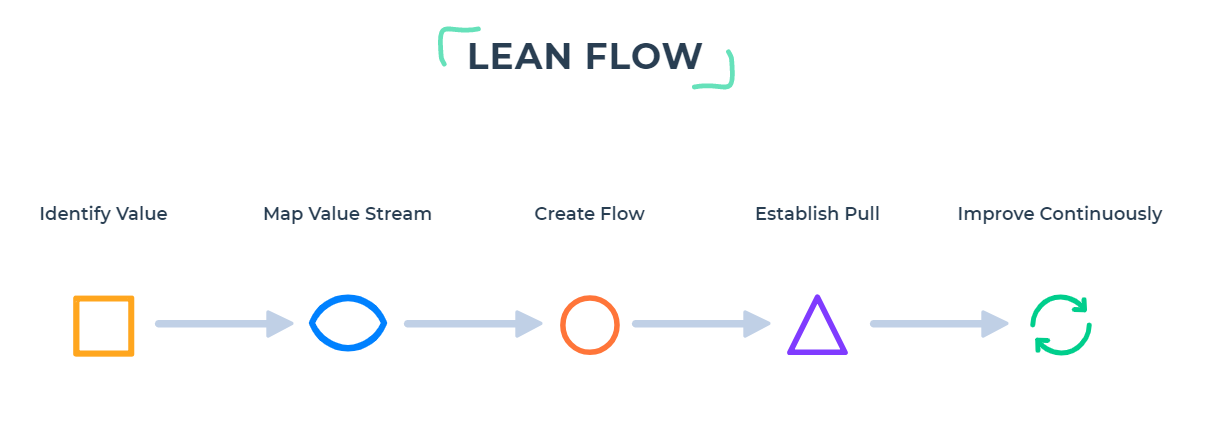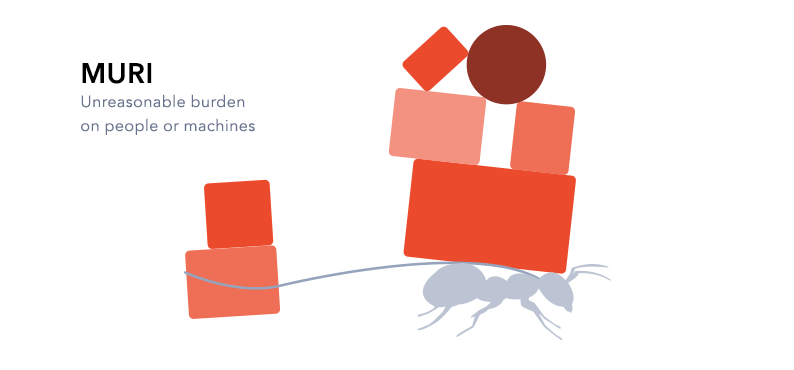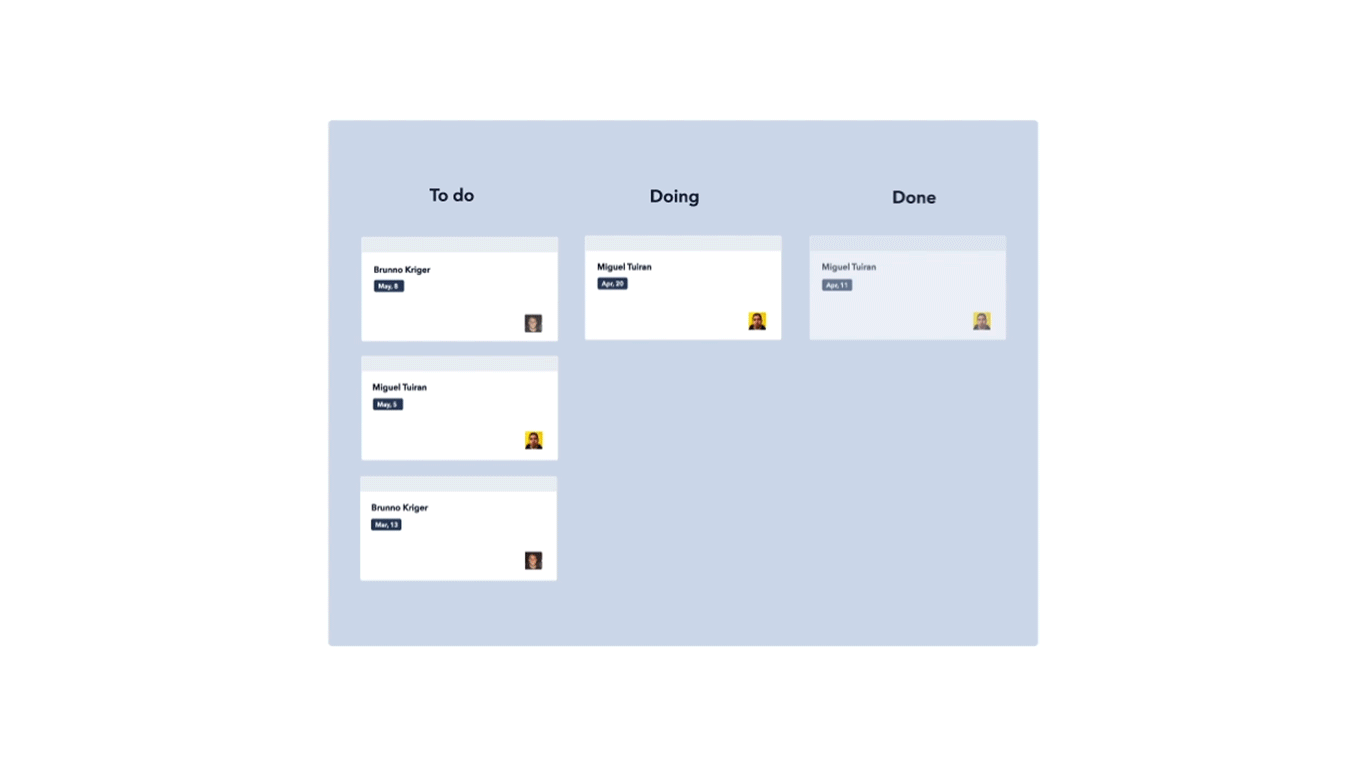ARTICLE SUMMARY
Lean is more than a method or a system. It’s a philosophy that needs to run in the company’s veins in order to be effective. It must be seen as a permanent transformation that has an impact on everyone’s routine. Its goal is to continuous improve—not only the business, but also the people involved (employees and clients).

Do you know what Amazon, Toyota and Spotify have in common? Apart from dominating their markets, they approach management the same way—they are all Lean!

Despite sounding like a complicated word, Lean management is actually an approach that supports practices that add value to the company and reduce waste, and at the same time promote continuous improvement.
Even though its roots go way back to manufacturing plants, it can be applied to any industry, company or department through the use of different tools and practices. And here, you’ll find out why.
It’s not a method, it’s a philosophy
Lean is more than a method or a system. It’s a philosophy that needs to run in the company’s veins in order to be effective. It must be seen as a permanent transformation that has an impact on everyone’s routine—in other words, it can’t be a top-down decision. Everyone must be on board.
Involving your team members in strategic improvement decisions is key since they’re the ones who’ll be actually using the processes you wish to improve. This is a participative rather than detached management approach: it humbly observes, challenges, encourages and learns rather than arrogantly bossing employees around. It’s the ultimate “practice what you preach” philosophy.
Since it’s a process of constant learning and improving, Lean Management can’t be defined as a fixed concept. Looking at this from a business perspective, you can’t just copy what other companies are doing because some strategies work for them mainly because different companies—and their processes—have specific particularities. That’s why Lean is better defined as a philosophy.
Pipefy, for instance, has Lean in its core. You can run all sorts of processes on Pipefy, and all of them will follow some characteristics that are inherent to Lean, such as value identification, well-established workflows with pull systems and continuous improvement. It doesn’t matter what type of process we’re talking about. Once it’s inside Pipefy, it can be made Lean!
Check out our process templates for teams of different areas, such as Finance, Human Resources, Customer Success, Marketing, Sales, Development and IT.
Strictly based on the customers’ perspective, what they actually want to pay for is value. In other words, value is anything that will stimulate the purchase of your product or, even more directly, make the customer want to pay you for what you are offering.
In order to properly optimize your processes, you’ll first need to map their value stream, identifying all the steps that are necessary to deliver value—from beginning to end. It will help you cut off what is generating cost without adding any value and optimize the remaining steps.
The main Lean tool used to map processes is the Value Stream Map (VSM), which can be implemented in seven steps. You can check out our step-by-step guide here.
If your main goal is to add value to the customer, waste is everything that does the exact opposite. Therefore, another Lean goal is to eliminate all sources of waste in the company.
These may include situations such as:
- Doing manual work that could be done automatically
- Holding unnecessary meetings or meetings without agendas
- Overburdening part or the entire team
- Several others
There are three common types of waste that are experienced by teams of different areas and different levels of maturity.
In Lean, waste is also known as 3M.
3M: the three types of waste in Lean
The 3Ms of Lean stand for Mura, Muri and Muda, which classify conditions and situations that cause waste.



Your goal here is to understand waste, identify it and act on it as soon as possible—always aiming for a process of continuous improvement. When you get past this phase, it’s important to create a pull system to keep it in a cycle. This takes us to the next concept:
Aim for a pull system
In Lean, the Pull System is directly connected to the production line. It preaches the practice of only manufacturing products after the customer’s demand is placed. The same can be applied to non-industrial environments.
This practice is used to reduce waste in any predictive or excessive planning situation in which value won’t be added. Thinking of an office, for example, the Pull System can be applied to the distribution of activities according to the actual demand.
Some Lean tools and practices can be a little overwhelming at first, but don’t panic! In order to help you understand everything clearly—including the Pull System—we developed a beginner’s Lean guide.
This Lean tool is one of many used to continuously improve processes, which brings us to the third principle of Lean management:
Lean is all about people
The culture of continuous improvement should be practiced daily by every employee, every team, at every level of the organization. The Lean philosophy encompasses a lot more than just processes, it’s about respect for people—the customers, the employees and those who actually get the job done.
It’s important to keep in mind that these principles are cyclical and should be continuously repeated if you wish to achieve better processes.
Remember: Your customer’s perception of value is not static and you shouldn’t be, either. If you don’t want to be left behind, you have to evolve with them.
Kanban will help you change for the better
Organization is another key to continuous improvement. It’s a great way to identify, eliminate and prevent waste repeatedly. In Lean, we use Kanban to achieve that.
Kanban is a visual tool that helps you organize, delegate and keep track of all activities through visual signs that give you instructions.

It can be built physically or digitally—just like Pipefy—in a simple and easy way. But more than using tools, Continuous Improvement is about culture, and that’s pure Kaizen.
Ultimately, Lean is all about achieving the best version of yourself, your team and your company by continuously improving processes. Kaizen, one of Lean’s foundations, is the exact translation of that—“Change for the Better.”
More than a practice of continuous improvement, Kaizen is a culture that believes in improving the business by improving people’s lives. In other words, adopting the Lean transformation means always finding room for improvement. It’s not a one-time practice. Its goal is to seek perfection.
Don’t be afraid of embracing the Lean transformation. It’s a fulfilling—and even a bonding—process. The people in your company will feel empowered and excited to join this challenging movement of daily improvements.
- If you want to know more about Lean and how you can improve your business through this enriching philosophy, read our Beginner’s Guide for Future Lean Experts
- And whenever you’re ready, check out our Hands-on Guide for Lean Implementation!





